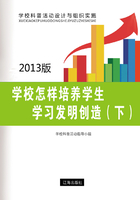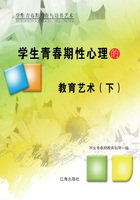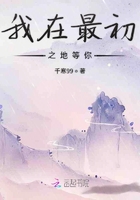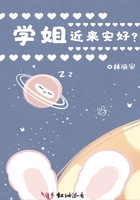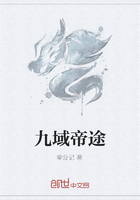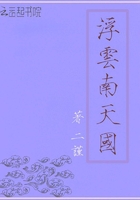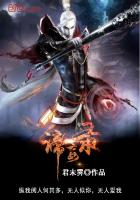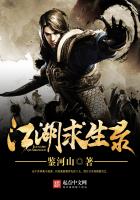On the basis of the left-and-right-side makeup patterns of sankuai walian, some more artistic lines have been added along the edge of these patterns until a sankuai walian facial makeup becomes fragmented.
Suilian (碎脸, fragmented makeup)
This makeup refers to a variation of Sankuai Walian facial makeup. Flower-shaped lines are added along the edge of left-and-right-side makeup patterns. These lines have been exaggerated to such an extent that it misshapes the left-and-right-side makeup patterns.
Notes:1)character人物,角色;2)incomplete不完全的;
3)fragmented不完整的,无条理的;4)misshape使造型不佳,把……弄
成畸形
6.你对传统戏剧乐器知道多少?
How much do you know about the musical instruments used in traditional Chinese opera?
Traditional Chinese opera commonly has a music band of string and percussion instruments. Some foreigners do not readily appreciate this art, for the opera tunes sometimes sound very shrill. The music is not intended to be melodic, as in the West. Rather, it is used to punctuate the performance with a strong rhythmical accompaniment. Each regional opera has its own typical band. The two main music instruments used in Beijing Opera are jinghu and erhu (京胡、二胡), two kinds of two-stringed bowed fiddles with a low register. Other instruments include yueqin (月琴, moon-shaped mandolin), pipa (琵琶, the Chinese lute), drums, bells, gongs and other instruments. The drumbeat sets the music tempo. The Kunshan Tune (昆腔) in Sichuan Opera is a melodic form, and a bamboo flute or vertical bamboo flute are the dominant melodic instruments. The clapper, consisting of wooden bars of unequal length, is used in Qinqiang Opera (秦腔) to produce a strong rhythm in harmony with clear loud voices of the actors.
In the older days, the band joined by some percussionists usually was in full view on stage. A drum-man conducted the band. Nowadays, the band has a fixed place on the stage, but out of sight of the audience.
Notes:1)shrilly尖声地;2)melodic有旋律的;3)rhythmical有节奏的;4)accompaniment伴奏;5)fiddle小提琴;6)register音域;7)mandolin曼陀林(一种拨弦乐器);8)unequal不相等的;9)harmony和谐;10)percussionist打击乐器演奏者
7.京剧是怎样产生的?
What is the origin of Beijing Opera?
Beijing Opera commands the largest following in China and is also the best-known form of Chinese opera abroad. During the mid-Qing Dynasty in the 17th and 18th centuries, Kunqu Opera (昆曲), characterized by soft singing and minimal orchestral accompaniment, such as the clapper or drum and a bamboo flute, rose to the status of national opera even in Beijing. In addition, Qinqiang Opera (秦腔) and Gaoqiang Melodic Form (高腔), a high-pitched singing style, were popular in Beijing. In 1779, on the occasion of Emperor Qianlong’s (乾隆) 70th birthday, throngs of artists arrived in Beijing to give performances, and among these people were four Huiban Opera Troupes (徽班剧团) from Anhui. After their performances at the Qing court, the troupes stayed in Beijing and continued to perform their plays. Some accomplished dramatists made innovations in the Huiban Opera there. Their music was based on the erhuang melodic tradition of Anhui Opera (徽剧) and the xipi tradition of Hubei Opera (汉剧). It also incorporated some of the repertoire, tunes and music accompaniment of Qinqiang Opera and folk music. These joint operatic forms developed during a twenty-year period to become a new form of opera with distinctive features, and it came to be called Beijing Opera during the reign of Emperor Xianfeng (咸丰).
Notes:1)minimal极微的;2)orchestral管弦乐(团)的;3)high-pitched声调高的;4)innovation创新;5)accomplished有造诣的;6)incorporate包含;7)operatic似歌剧的;8)di-stinctive有特色的
8.什么是昆曲?
What is Kunqu?
Kunqu (昆曲) was originally called the Kunshan Tune (昆腔). In the Qing Dynasty, it was renamed Kunqu, and at present it is known as Kunju Opera (昆剧). Kunqu is one of the oldest extant forms of Chinese opera. Due to its influence on other Chinese theatre forms, it is known as the“teacher”or“mother”of a hundred operas, including Beijing Opera and Sichuan Opera. On May 18, 2001 it was listed as one of the Masterpieces of the Oral and Intangible Heritage of Humanity by UNESCO.
Kunqu was developed during the late Yuan Dynasty in Kunshan (昆山), east of Suzhou city. It was a dramatic form developed from Nanxi (南戏), the Southern Drama of the Yuan Dynasty, and its emergence ushered in the second Golden Era of Chinese drama. The famous romance-dramas included Peony Pavilion (《牡丹亭》) by Tang Xianzu from the Ming, and The Palace of Eternal Youth (《长生殿》) by Hong Sheng and The Peach Blossom Fan (《桃花扇》) by Kong Shangren from the Qing.
Kunqu combines acting, singing, dancing, dialogue, and acrobatics. Characteristically, it is noted for delicate tunes and elegant melodies. A bamboo flute, suona trumpet, pipa instrument, and traditional percussion are the dominant melodic instruments.
Some well-known plays written in the Ming and Qing dynasties are still performed on stage. In addition, many classical Chinese novels and stories, such as Romance of the Three Kingdoms, Outlaws of the Marsh and Journey to the West were adapted very early into dramatic pieces.
Notes:1)extant仍然存在的;2)masterpiece名作;3)in-tangible无形的;4)heritage文化遗产;5)humanity人文学科;6)UNESCO(United Nations Educational, Scientific, and Cultural Organization)联合国教科文组织;7)emergence出现;8)peony牡丹;9)eternal永恒的;10)acrobatics杂技;11)percussion打击乐器;12)melodic有旋律的
9.川剧曲调有哪些特点?
What is the feature of the melodic forms in Sichuan Opera?


